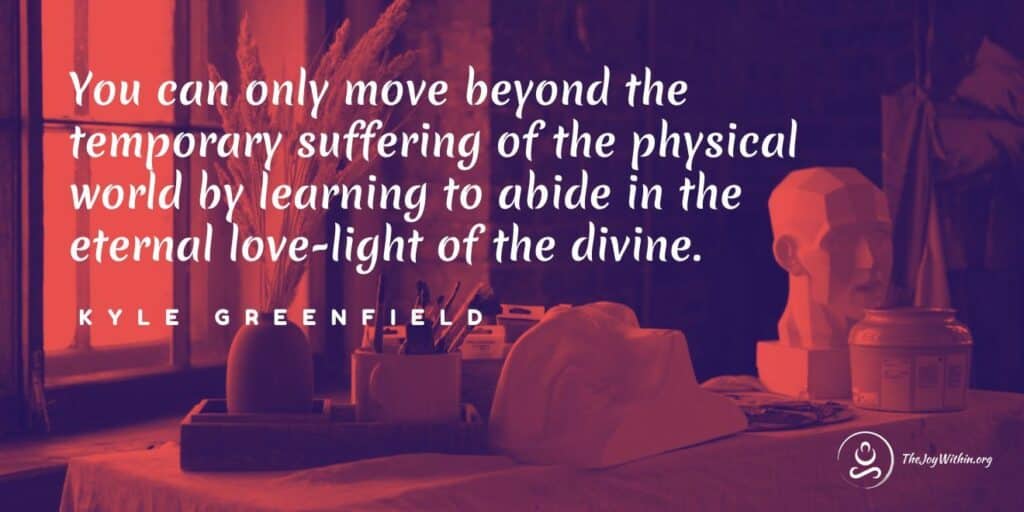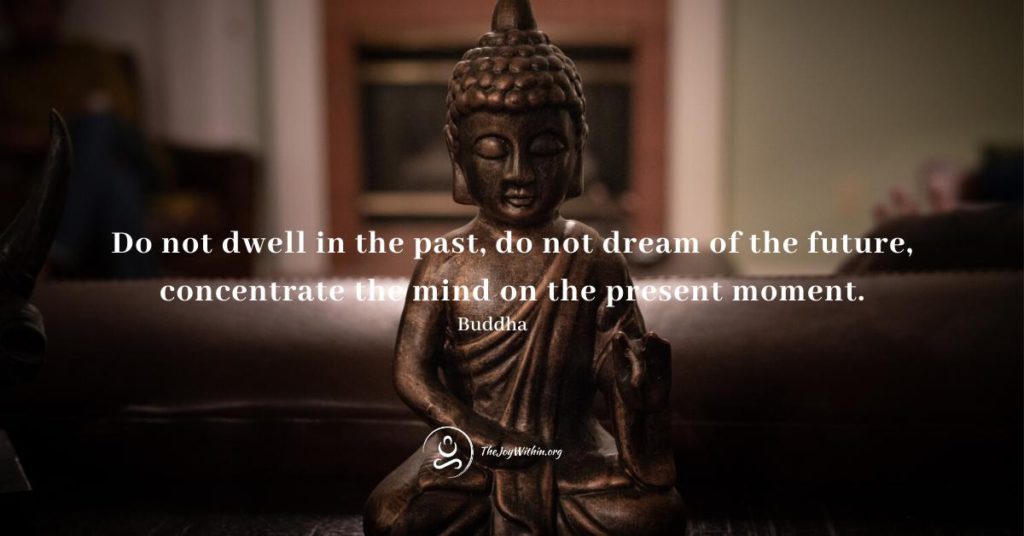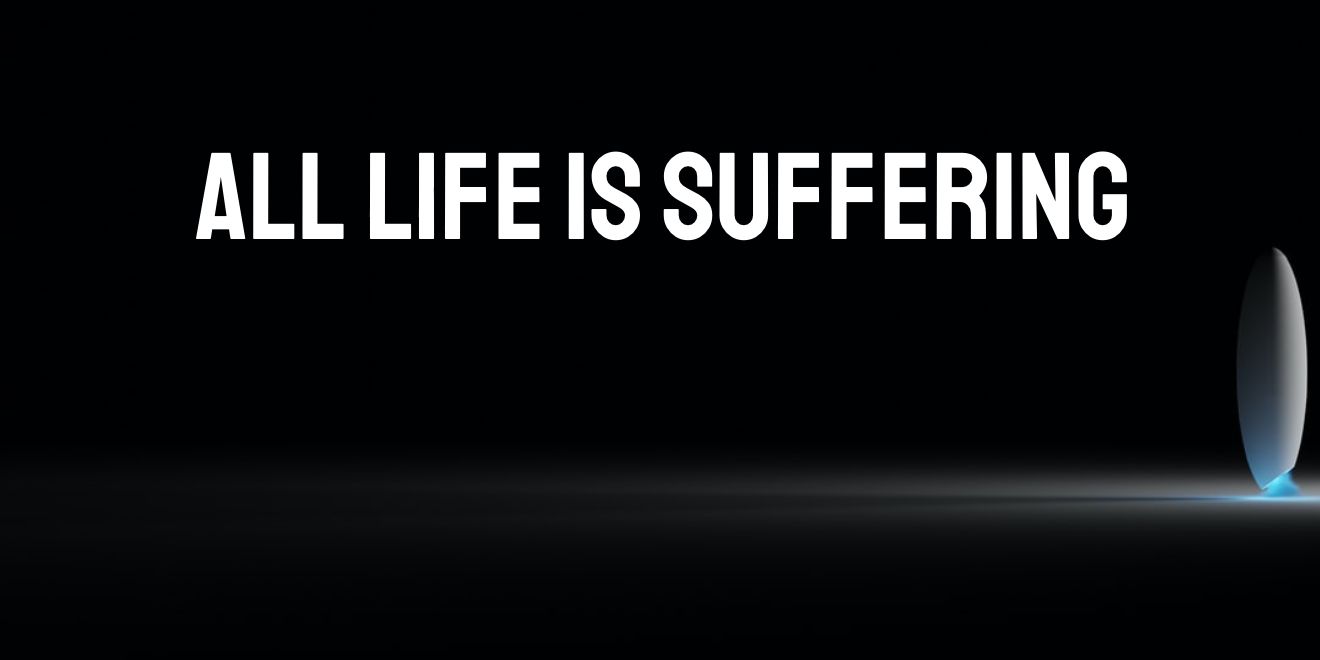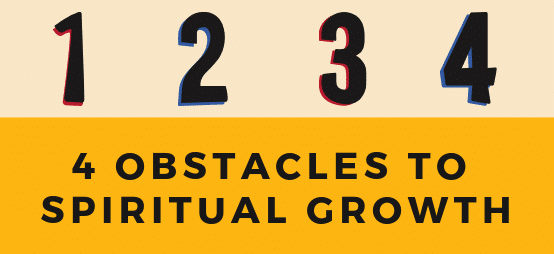Buddha famously taught that all life is suffering.
In fact, he believed this principle was so fundamental, that he enshrined it into the first of The Four Noble Truths, teaching that we are all trapped in samsara, an endless cycle of pain and suffering.
Unfortunately, this quote is often misunderstood. IN this post, we’ll dive into what the idea that All Life is Suffering really means, and how you can interpret and apply it in your own life.
What Does All Life Is Suffering Really Mean?
In order to understand the meaning of All Life Is Suffering, you have to understand it’s context.
“Suffering” is the most common English translation of the Pali word dukkha. What Buddha really said is that all of life is dukkha, which is a fundamental pillar of Buddhism, and a foundational practice that much of Buddhism has been based off of.
Dukkha most commonly means pain, suffering, or dissatisfaction. But, it can also be interpreted to mean that anything temporary is dukkha. This does not necessarily mean “suffering” in the modern sense of the word.
Temporary experiences are the nature of the world, so perhaps a better interpretation of the word in this context is to understand suffering as temporary, physical experience as a contrast to the eternal, spiritual sense of Oneness, which I often refer to as joy-bliss-love-life.
In other words, suffering – in this context – is simply the absence of divine joy. So long as we place importance on the fleeting experiences of the physical world, we will continue to suffer.
Related Post: How to Practice Loving-Kindness and Compassion in Daily Life
Thus it makes sense that you can only transcend suffering through Enlightenment. You can only move beyond the temporary suffering of the physical world by learning to abide in the eternal love-light of the divine.

What Is The Cause of All Sufferings in Life?
Even though dukkha (suffering) can be ascribed to any temporary experience in life (Buddhism holds that even joyful or happy experiences have dukkha because they are ultimately fleeting), it does not mean that impermanence is the cause of that suffering.
Instead, the cause of suffering lies within our own minds.
Because our minds have been conditioned to seek happiness in temporary things, we create the feeling of pain and suffering for ourselves. It isn’t the fact of impermanence, but the way in which our minds perceive and value impermanent things, that originates our suffering.
In other words, our suffering comes from attachment to things that are not “real.” Anything that is less than the truth of divine peace and eternal love, is false.
Thus it is our attachment to worldly things that causes our suffering.
Related Post: The Buddhist Prayer of Forgiveness.
The 3 Types of Suffering in Buddhism
The Buddhist First Noble Truth identifies three primary causes of suffering in life.
Dukkha-Dukkha: The Suffering of Suffering.
The first is dukkha-dukkha. This is most akin to what we in English generally think of as suffering. It refers to the physical, emotional, and mental pain, discomfort, or dissatisfaction we experience.
Viparinama-Dukkha: The Suffering of Change.
The second type of suffering is viparinama-dukkha. This is most commonly translated as the suffering of change, and refers to the suffering we experience when we cannot accept impermanence. We attempt to hold on to experiences and relationships in which we find joy, and create struggle for ourselves when we cannot let those experiences go.
Sankhara-Dukkha: The Suffering of Existence.
The third type of suffering is sankhara-dukkha. This is the suffering of existence. In the Buddhist tradition, all of life is permeated by a background suffering, which is simply the nature of living in physical reality.

How To Escape From The Truth of Suffering
Related Post: How To Be Spiritual: Principles and Practices for Modern Life.
What people often overlook is the fact that there is a clear path out of this suffering. In fact, the other three Noble Truths (and, indeed, pretty much all of Buddhism) are devoted to helping you break this cycle of samsara.
But, how can we interpret this path today, while living in the modern world?
Here at The Joy Within, we teach a simple, 3 step path.
Step 1: Step Back and Quiet The Mind.
Step 2: Become Aware of Your Thoughts.
Step 3: Choose a Better-Feeling Thought.
When you follow those three steps, you can eliminate the power negative thoughts hold over you, and become the calm, confident, and happy person you deserve to be.
It’s a simple path, that starts with learning how to tune-in to the natural joy that is already within you.




